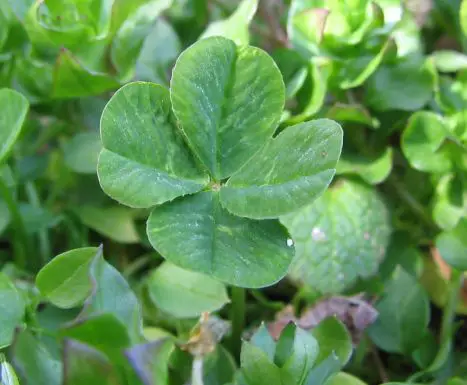
Legend has it that Saint Patrick used the regular three leaved clover to teach pagan inhabitants of the British Isles about the Holy Trinity of Christianity. We don’t really know when and where the four leaved clover became a symbol of good luck but for more than a 1000 years, people around the world have associated the four leaf clover with good luck. In fact, during the middle ages, Europeans believed that finding a four leaf clover is a surefire way to see fairies or that finding one would bring immensely good fortune to its finder.
Of course, the four leaf clover is extremely rare to find. The tree leaf clover is the most common type of clover in the world though some clovers are known to have as many as 25 leaves! But those are extremely rare finds and needless to say they are eh most prized ones. That being said, the four leaf clover isn’t exactly commonplace either and experts claim that those are as rare as one in 10,000 three leaved ones.
A young clover, which is what a shamrock is considered to be, could feature the lucky fourth leaf if the shamrock itself has been subject to a rare mutation. The fourth leaf, which according to legend is supposed to represent God’s Grace, is thus nothing more than an anomaly in its regular genetic structure much like when someone with born with one brown eye and one blue eye.
Clovers are actually part of the pea family of plants and the three leafed clover is called trefoil or Trifolium is the most common variety in the clover genus and the 300 species of plants in the clover family are mostly three leaved varieties. Hence, the four leafed clover isn’t a separate species of clovers.